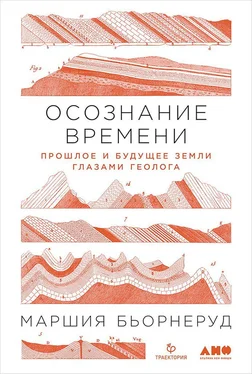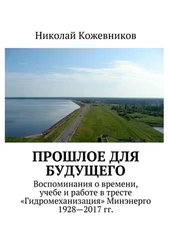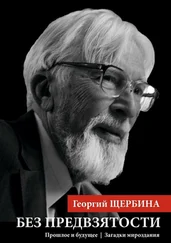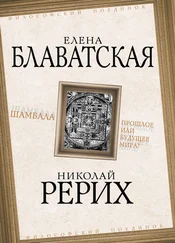Marchis, S., et al., 2016. Widespread mixing and burial of Earth's Hadean crustby asteroid impacts. Nature , 511, 578–582. doi:10.1038/nature13539
Williams, G., 2000. Geological constraints on the Precambrian history of Earth's rotation and the Moon's orbit. Reviews of Geophysics , 38, 37–59. doi:10.1029/1999RG900016
Sagan, C., and Mullen, G., 1972. Earth and Mars: Evolution of atmospheres and surface temperatures. Science , 177, 52–56.
Mojzsis, S. J., et al., 1996. Evidence for life on Earth before 3800 million yearsago. Nature , 384, 55–59. doi:10.1038/384055a0
van Zuilen, M., Lepland, A., and Arrhenius, G, 2002. Reassessing the evidence for the earliest traces of life. Nature , 418, 627–630. doi:10.1038/nature00934
Whitehouse, M., Myers, J., and Fedo, C., 2009. The Akilia Controversy: Field, structural and geochronological evidence questions interpretations of >3.8 Ga life in SW Greenland. Journal of the Geological Society , 166, 335–348. doi:10.1144/0016-76492008- 070
Westall, F., and Folk, R., 2003. Exogenous carbonaceous microstructures in Early Archean cherts and BIFs from the Isua Greenstone Belt: Implications for the search for life in ancient rocks. Precambrian Research , 126, 313–330.
Van Kranendonk, M., Philippot, P., Lepot, K., Bodorkos, S., and Pirajno, F., 2008. Geological setting of Earth's oldest fossils in the c.3.5 Ga Dresser Formation, Pilbara craton, Western Australia. Precambrian Research , 167, 93–124.
Nutman, A., Bennett, V., Friend, C., Van Kranendonk, M., and Chivas, A., 2016. Nature , 537; http://dx.doi.org/10.1038/nature19355
Watson, Traci, 3.7 billion year old fossil makes life on Mars less of a long shot. USA Today , 31 August 2016; http://www.usatoday.com/story/news/2016/08/31/37-billion-year-old-fossil-makes-life-mars-less-long-shot/89647646/
Zerkle, A., et al., 2017. Onset of the aerobic nitrogen cycle during the Great Oxidation Event. Nature . doi:10.1038/nature20826
Kump, L., and Barley, M., 2007. Increased subaerial volcanism and the rise of oxygen 2.5 billion years ago. Nature , 448, 1033–1036. doi:10.1038/nature06058
Johnson, T., et al., 2014. Delamination and recycling of Archean crust caused by gravity instabilities. Nature Geoscience , 7, 47–52. doi:10.1038/ngeo2019
Lyons, T., Reinhard, C., and Planavsky, N., 2014. The rise of oxygen in Earth'searly ocean and atmosphere. Nature , 307, 506–511. doi:10.1038/nature13068
Planavsky, N., et al., 2014. Low mid-Proterozoic atmospheric oxygen levels and the delayed rise of animals. Science , 346, 635–638. doi:10.1126/science.1258410
Reinhard, C., et al., 2016. Evolution of the global phosphorus cycle. Nature . doi:10.1038/nature20772
Wolf, E., and Toon, O., 2015. Delayed onset of runaway and moist greenhouse climates for Earth. Geophysical Research Letters , 41, 167–172. doi:10.1002/2013GL058376. Хорошая новость состоит в том, что это исследование существенно продлило временнóе окно обитаемости нашей планеты по сравнению с прежними действительно удручающими оценками в 170–650 млн лет!
Planavsky, N., et al., 2010. The evolution of the marine phosphate reservoir. Nature , 467, 1088–1090.
Erwin, D., et al., 2011. The Cambrian conundrum: Early divergence and later ecological success in the early history of animals. Science , 334, 1091–1097. doi:10.1126/science.1206375
Фраза Кельвина из письма Джону Филлипсу; цит. по: Morrell, J., 2001. The age of the Earth in the twentieth century: A problem (mostly) solved. In Lewis, C., and Knell, S., The Age of the Earth from 4004 BC to AD 2002 . Geological Society of London Special Publication, 190, 85–90.
McCallum, M., 2007. Amphibian decline or extinction? Current declines dwarf background extinction rate. Journal of Herpetology , 41, 483–491. doi:10.1670/0022–1511
Raup, D., and Sepkoski, J., 1984. Periodicity of extinctions in the geologic past. Proceedings of the National Academy of Sciences , 81, 801–805.
Whitman, W., Coleman, D., and Wiebe, W., 1998. Prokaryotes: The unseen majority. Proceedings of the National Academy of Sciences , 95, 6578–6583.
Cooper, K., and Kent, A., 2014. Rapid remobilization of magmatic crystals keptin cold storage. Nature , 506, 480–483. doi:10.1038/nature12991
Webber, K., et al., 1999. Cooling rates and crystallization dynamics of shallow level pegmatite-aplite dikes, San Diego County, California. American Mineralogist , 84, 718–717.
Zalasiewicz, J., et al., 2008. Are we now living in the Anthropocene? GSA Today , 18 (2), 4–8. doi:10.1130/GSAT01802A.1
Lambeck, K., et al., 2014. Sea level and global ice volumes from the Last Glacial Maximum to the Holocene. Proceedings of the National Academy of Sciences , 111, 15296–15303. doi:10.1073/pnas.1411762111
Центр биологического разнообразия; http://www.biologicaldiversity.org/programs/biodiversity/elements_of_biodiversity/extinction_crisis/
Gerlach, T., 2011. Volcanic vs. anthropogenic carbon dioxide. Eos, Transactions, American Geophysical Union , 92, 201–203.
Rockström, J., et al., 2009. A safe operating space for humanity. Nature , 461, 472–475. doi:10.1038/461472a
Haberl, H., et al., 2007. Quantifying and mapping the human appropriation of net primary production in Earth's terrestrial ecosystem. Proceedings of the National Academy of Sciences , 104, 12942–12947. doi:10.1073/pnas0704243104
Walker, M., et al., 2009. Formal definition and dating of the GSSP (Global Stratotype Section and Point) for the base of the Holocene using the Greenland NGRIP ice core, and selected auxiliary records. Journal of Quaternary Science , 24, 3–17. doi:10.1002/jqs.1227
Thompson, L., et al., 2013. Annually resolved ice core records of tropical climate variability over the past 1800 Years. Science , 340, 945–950. doi:10.1126/science.123421
Zhang, D., et al., 2011. The causality analysis of climate change and large-scale human crisis. Proceedings of the National Academy of Sciences , 108, 17296–17301. doi:10.1073/pnas.1104268108
Hsiang, S., Burke, M., and Michel, E., 2013. Quantifying the influence of climate on human conflict. Science , 341, 1212–1228. doi:10.1126/science.1235367
Читать дальше
Конец ознакомительного отрывка
Купить книгу




![Алан Джасанов - Мозг - прошлое и будущее [Что делает нас теми, кто мы есть]](/books/401119/alan-dzhasanov-mozg-proshloe-i-buduchee-chto-delaet-thumb.webp)



